Choosing the right website builder is critical; it all starts with picking the right tool. This feature comparison’ll delve into the strengths and differences between Divi and Oxygen, two powerful website builders.
Whether you’re a novice looking for simplicity or an experienced developer searching for customization, we’ve got you covered. Join us as we explore these tools to help you make an informed choice for your web projects.
Features of Oxygen vs Divi 2023
1. Layouts
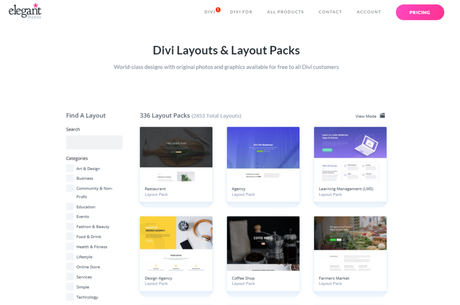
The Divi and Oxygen Builder platforms provide users access to libraries containing pre-built layouts. On the other hand, the Divi library gives users access to many customization options.
Additionally, it has a sizable community of developers located all over the world who provide services that are connected to Divi.
In addition, it has just recently announced that it will launch its marketplace. To assist high-quality developers in adding their plugins, child themes, and other elements made specifically for Divi.
This would open up more opportunities to use premium tools, allowing for the creation of superior websites. On the other hand, the Oxygen Builder provides a smaller number of features that are accessible outside of the builder interface.
Winner: Divi
2. User interface
UI of Divi
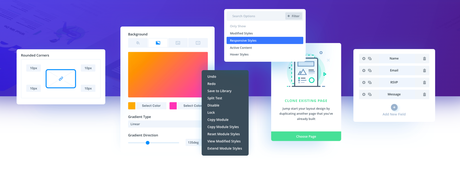
The user interface of Divi is straightforward and consists of a sequence of element exhibitions. This means the user is prompted to add one element at a time, beginning with the section, moving on to the row, and finishing with the module.
Your preferences on the layout can easily be accommodated by moving the Customizer to the right or left or positioning it wherever on the canvas.
UI of Oxygen Builder
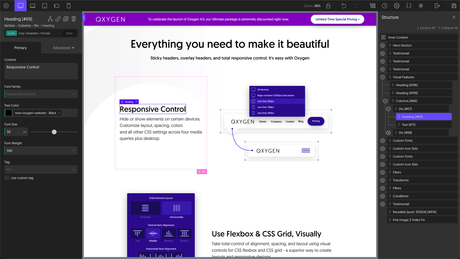
On the other hand, the Oxygen Builder’s user interface is unclear and difficult to comprehend at first glance.
The top bar contains various customization choices, while the left side of the page is dedicated to the elements and the right side to the structure.
These different components can shorten a user’s time to develop a website. Additionally, it requires additional time to become familiar with compared to Divi.
Verdict: Although Divi is viewed as a winner regarding the CSS of its UI kit, it isn’t a clear achiever compared to Oxygen on this matter. This may be because of the extensive layout orders in the UI provided by Oxygen.
3. The number of elements under design.
Even though Oxygen provides a way to use variations of the same design, a new user could be confused about what to choose while using a specific tool.
But when it comes to Divi, it all becomes much simpler since it has a reasonable amount of tools that make choosing very easy for newbies.
4. Animation effects
Although both builders offer an animation system, Divi provides a much bigger diversity of animation effects.
They take web animation designing to the next cloud with multiple customization options. Oxygen includes only about 7 of the effects already involved under Divi, which makes Divi look good indefinitely.
5. Complexity
Divi
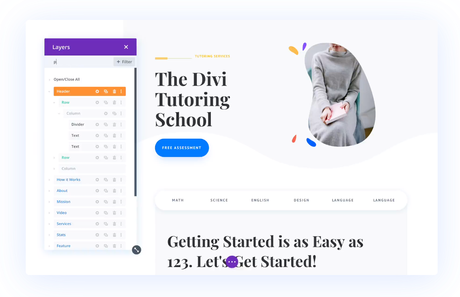
Anyone with a basic understanding of technology may make any essential or major modifications to a Divi site using the platform’s intuitive visual builder. Real-time page creation is possible because of this feature.
Oxygen Builder
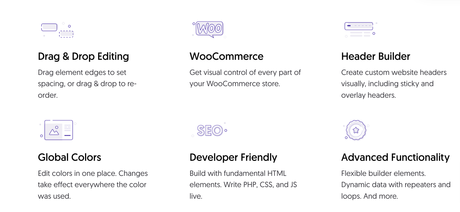
Users of Oxygen Builder can develop a website in real time with the platform. On the other hand, this new page builder is not like that.
Although the arrangement of items on a screen can be changed by dragging and dropping, no true front-end editor is available like in Divi Visual Builder.
6. Design Libraries
Regarding design libraries, both Divi and Oxygen Builder offer their resources. However, there is a notable difference in the variety and availability of these resources.
Oxygen Builder, unfortunately, falls short in terms of pre-built websites. Unlike Divi, it doesn’t have a robust third-party community offering a wide range of free templates.
Oxygen ships with approximately 20 pre-built templates created by the Oxygen team, but in many cases, users may prefer to start from scratch and create their designs from the ground up.
Even the premium template offerings for Oxygen Builder may leave some users wanting more.
While several companies offer their frameworks and products, if you’re seeking a design library that can rival Divi’s extensive built-in resources and the thriving third-party community offering free and premium templates, you won’t find that level of abundance with Oxygen Builder.
7. Frontend Website Performance
When you choose a WordPress page builder or theme, one of the most important things to consider is how well it works.
Google uses website speed as a major ranking reason, and it also makes the user experience better, so it’s something you should think about when making any changes to your website.
But besides a good WordPress host, the page builder you use will have the most effect on how well your site performs.
That’s where the Oxygen Builder shines, and the Divi Builder falls short. The Divi Builder has always been known as a tool mostly for designers. Its terrible speed has left developers disappointed.
The code is too long, and elementor might be the only worse page maker. Oxygen, on the other hand, is made to be a high-performance tool for making websites.
Since the first versions, the team has worked to make clean code with no blood or extra Dom parts and only uses what is needed.
Because of this, the Oxygen Builder is much faster than the Divi Builder regarding how quickly a website loads.
Quick Links
- Features Comparison Of Divi vs Wix
- Divi vs Flatsome
- Divi Theme Features
- Best Divi Site Examples
Conclusion- Feature Comparison of Divi vs Oxygen
The showdown between Divi and Oxygen comes down to what you need and your technical skills. With its easy-to-use builder, Divi is great for most people, while Oxygen offers more control for advanced users.
So, the winner depends on how tech-savvy you are and how much you want to customize your website.

